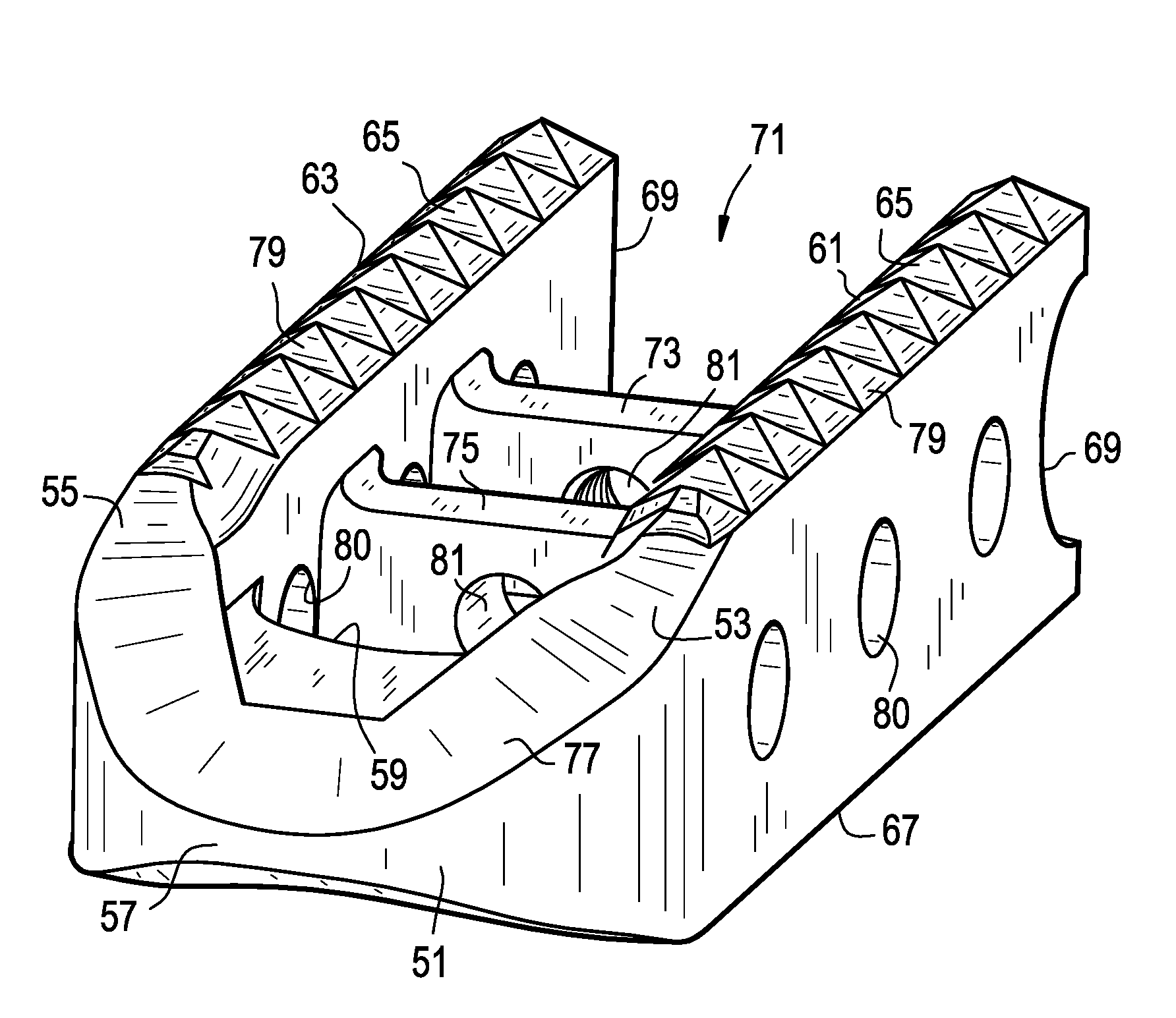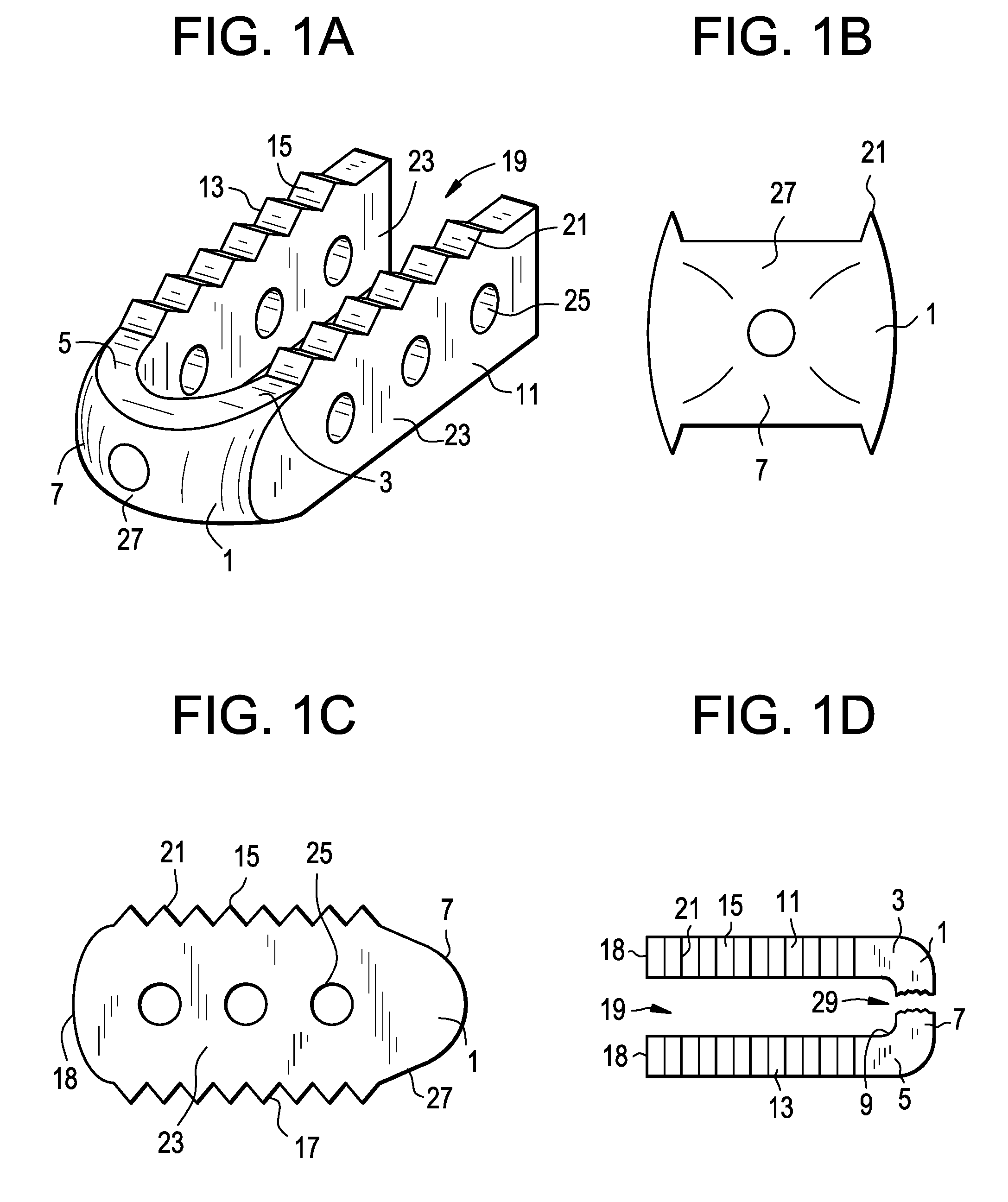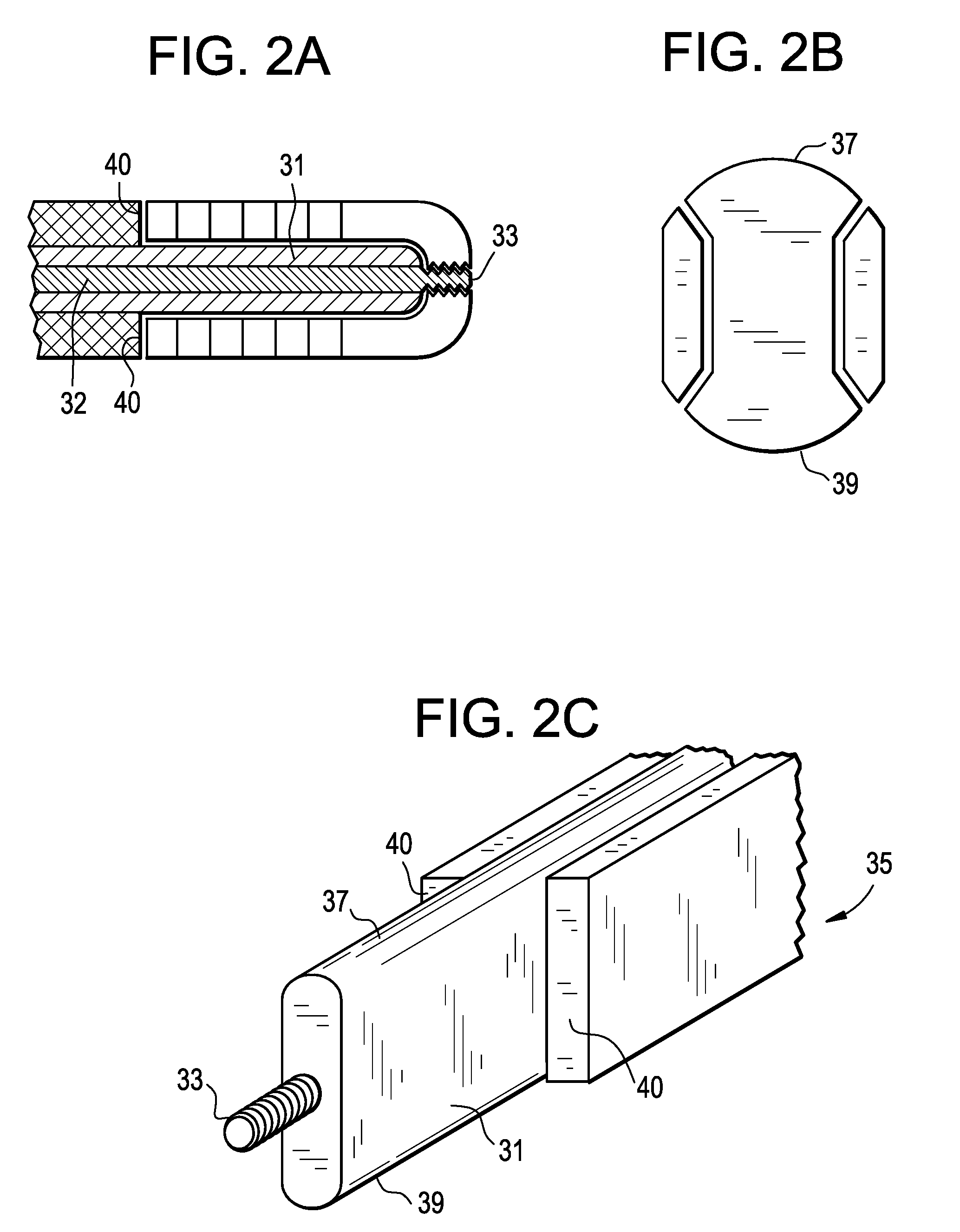Composite vertebral spacers and instrument
a technology which is applied in the field of composite vertebral spacers and instruments, can solve the problems of high proinflammatory cytokines, retard the flow of nutrients into the disc, and retard the flow of waste products out of the disc, and achieve the effect of minimal invasiveness
- Summary
- Abstract
- Description
- Claims
- Application Information
AI Technical Summary
Benefits of technology
Problems solved by technology
Method used
Image
Examples
Embodiment Construction
[0051]The present invention relates to a spinal interbody spacer that is easy to insert, fracture resistant, migration resistant and fillable with a flowable biologic material after insertion.
[0052]Now referring toFIGS. 1A-1D, there is provided an intervertebral fusion cage, comprising:[0053]a) a leading end 1 having a right 3 and left 5 ends, a front surface 7 and a back surface 9, the back surface being adapted for reception of a rod,[0054]b) first 11 and second 13 support members extending backwards from the right and left ends, each member having an upper 15 and lower 17 surface adapted for bearing against and gripping adjacent vertebral bodies and a proximal surface 18, and[0055]c) an open trailing end 19 formed between the back surfaces of the support members.
[0056]Upon each of the upper and lower surfaces of the cage, there is provided a plurality of teeth 21. When the cage is inserted and the inserter is removed, these teeth bite into the adjacent vertebral bodies and thereb...
PUM
| Property | Measurement | Unit |
|---|---|---|
| height | aaaaa | aaaaa |
| shape | aaaaa | aaaaa |
| convex shape | aaaaa | aaaaa |
Abstract
Description
Claims
Application Information
 Login to View More
Login to View More - R&D
- Intellectual Property
- Life Sciences
- Materials
- Tech Scout
- Unparalleled Data Quality
- Higher Quality Content
- 60% Fewer Hallucinations
Browse by: Latest US Patents, China's latest patents, Technical Efficacy Thesaurus, Application Domain, Technology Topic, Popular Technical Reports.
© 2025 PatSnap. All rights reserved.Legal|Privacy policy|Modern Slavery Act Transparency Statement|Sitemap|About US| Contact US: help@patsnap.com



